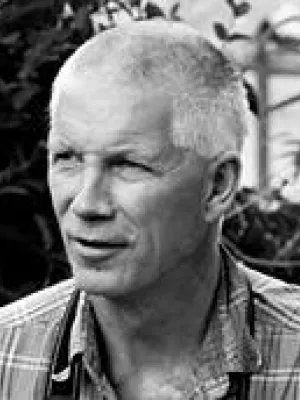
Jonas Ardö
Professor

Estimating terrestrial gross primary productivity in water limited ecosystems across Africa using the Southampton Carbon Flux (SCARF) model
Author
Summary, in English
The amount of carbon uptake by vegetation is an important component to understand the functioning of ecosystem processes and their response/feedback to climate. Recently, a new diagnostic model called the Southampton Carbon Flux (SCARF) Model driven by remote sensing data was developed to predict terrestrial gross primary productivity (GPP) and successfully applied in temperate regions. The model is based on the concept of quantum yield of plants and improves on the previous diagnostic models by (i) using the fraction of photosynthetic active radiation absorbed by the photosynthetic pigment (FAPARps) and (ii) using direct quantum yield by classifying the vegetation into C3 or C4 classes. In this paper, we calibrated and applied the model to evaluate GPP across various ecosystems in Africa. The performance of the model was evaluated using data from seven eddy covariance flux tower sites. Overall, the modelled GPP values showed good correlation (R > 0.59, p < 0.0001) with estimated flux tower GPP at most sites (except at a tropical rainforest site, R = 0.38, p = 0.02) in terms of their seasonality and absolute values. Mean daily GPP across the investigated period varied significantly across sites depending on the vegetation types from a minimum of 0.44 g C m−2 day−1 at the semi-arid and sub-humid savanna grassland sites to a maximum of 9.86 g C m−2 day−1 at the woodland and tropical rain forest sites. Generally, strong correlation is observed in savanna woodlands and grasslands where vegetation follows a prescribed seasonal cycle as determined by changes in canopy chlorophyll content and leaf area index. Finally, the mean annual GPP value for Africa predicted by the model was 35.25 Pg C yr−1. The good performance of the SCARF model in water-limited ecosystems across Africa extends its potential for global application.
Department/s
- Dept of Physical Geography and Ecosystem Science
- BECC: Biodiversity and Ecosystem services in a Changing Climate
Publishing year
2018-07-15
Language
English
Pages
1472-1483
Publication/Series
Science of the Total Environment
Volume
630
Links
Document type
Journal article
Publisher
Elsevier
Topic
- Physical Geography
Keywords
- C3/C4 photosynthesis
- Carbon exchange
- Diagnostic model
- Gross primary productivity
- Photosynthetic quantum yield
- Remote sensing
Status
Published
ISBN/ISSN/Other
- ISSN: 0048-9697

